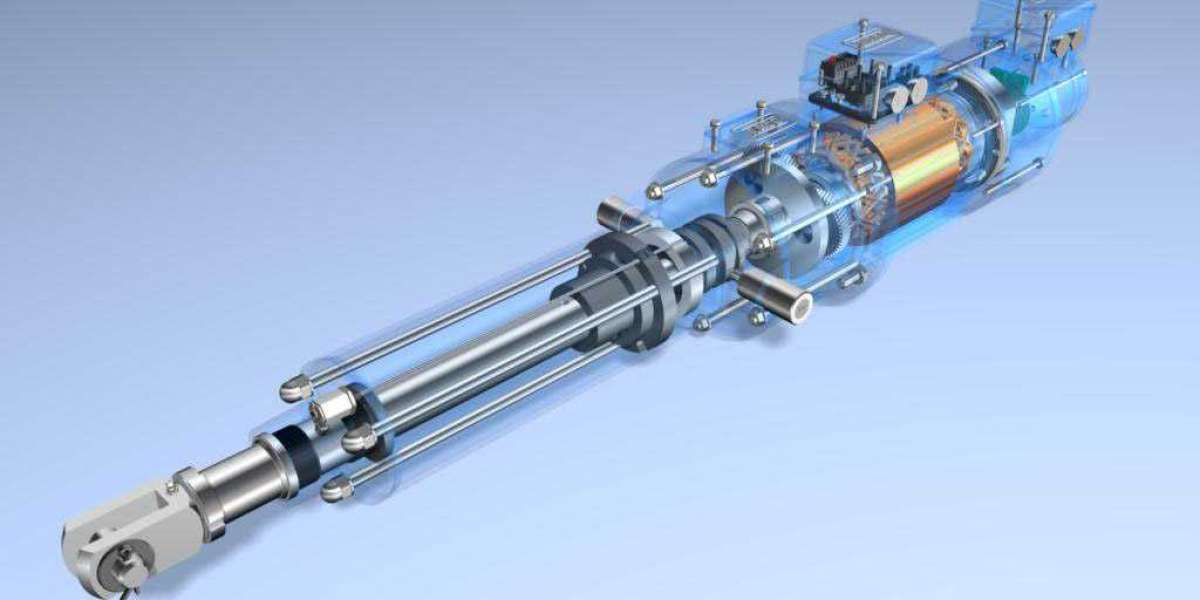Linear motion is important for many industrial applications that require moving, positioning or adjusting components. Traditionally pneumatic cylinders were used for linear actuation needs. However, electric linear cylinders provide several advantages over pneumatic cylinders. With advancements in technology, electric linear cylinders are becoming more intelligent and versatile.
What are Electric Linear Cylinders?
Electric linear cylinders, also known as linear actuators, are electromechanical devices that generate precise linear motion. They use an electric motor coupled to a screw mechanism to translate rotational motion into linear motion of a piston rod. Electric linear cylinders are self-contained units that do not require external air supply like pneumatic cylinders.
The basic components of an Electric Linear Cylinder include an electric motor, transmission system, position sensor and control electronics. The motor provides torque that drives the transmission system consisting of a lead screw and nut mechanism. As the lead screw rotates, it causes linear motion of the cylinder rod via the nut. Position sensors like encoders provide feedback about the rod position to the control system.
Advantages over Pneumatic Cylinders
Electric linear cylinders offer several inherent advantages compared to pneumatic cylinders:
Precision and Accuracy
Electric linear cylinders enable precise positioning better than pneumatic cylinders. They can achieve micron-level accuracy through closed-loop control of motor and position feedback. Pneumatic cylinders are difficult to control accurately due to factors like air compressibility.
Energy Efficiency
Electric linear cylinders have higher energy efficiency than pneumatic cylinders since compressed air generation and distribution involves losses. Electric motors directly convert electrical energy into mechanical motion with high efficiency.
Clean Operation
Electric linear cylinders eliminate oil and air leakages associated with pneumatic cylinders. This makes them suitable for cleanroom and dust-free environments in food, pharmaceutical and semiconductor industries.
Flexibility and Controllability
Electric cylinders provide features like variable speed control, dynamic braking, proximity switches etc through programmable controllers and drives. Pneumatic cylinders have limited controllability.
Safety
Electric linear cylinders have inherent safety benefits over pneumatics. In the event of power failure, they can be programmed to move to or hold a safe positioning. Pneumatic cylinders may drift on air pressure loss.
Applications
Given the advantages, electric linear cylinders are increasingly replacing pneumatic cylinders across various industrial applications:
Material Handling
They are widely used in automated assembly and packaging machinery for applications like lifting, gripping, inserting and orienting components.
Testing Equipment
In testing machines, electric cylinders provide precise motion control required for loading samples, positioning fixtures and displacement tests.
Semiconductor Equipment
In semiconductor fabrication equipment, electric cylinders enable micron-level positioning accuracy needed for wafer handling, masking and lithography stages.
Medical Devices
Features like clean operation, soft starts and precision make electric cylinders suitable for rehabilitation equipment, surgical tables and diagnostic imaging systems.
Types of Electric Linear Cylinders
Electric linear cylinders come in different varieties depending on the transmission mechanism, size and application. Some common types are:
Ball Screw Cylinders
Ball screw and circular ball nut transmission provides high precision linear motion. Used where accuracy is critical in semiconductor, medical and precision manufacturing equipment.
Acme Screw Cylinders
Acme screw and trapezoidal nut is a cost-effective transmission. Used in general automation, material handling and factory floor positioning applications.
Belt Drive Cylinders
Uses toothed belt and pulley transmission for direct conversion of motor torque to linear motion. Provides lower backlash than screw drives. Used in pick and place machines.
Integrated Cylinders
Compact cylinder with integrated motor, drive and controller. Commonly used in space constrained applications like desktop automation, medical carts and rehabilitation equipment.
Cleanroom Cylinders
Designed for clean environments with features like motor encapsulation, minimal leakage paths and easy disassembly for cleaning validations. Used in semiconductor wafer handling and medical equipment.
In summary, electric linear cylinders provide an intelligent and eco-friendly solution for various linear motion needs across industries. With advances in actuation technology, their applications will continue to grow in automation, manufacturing and other sectors.
Get more insights on Electric Linear Cylinders








